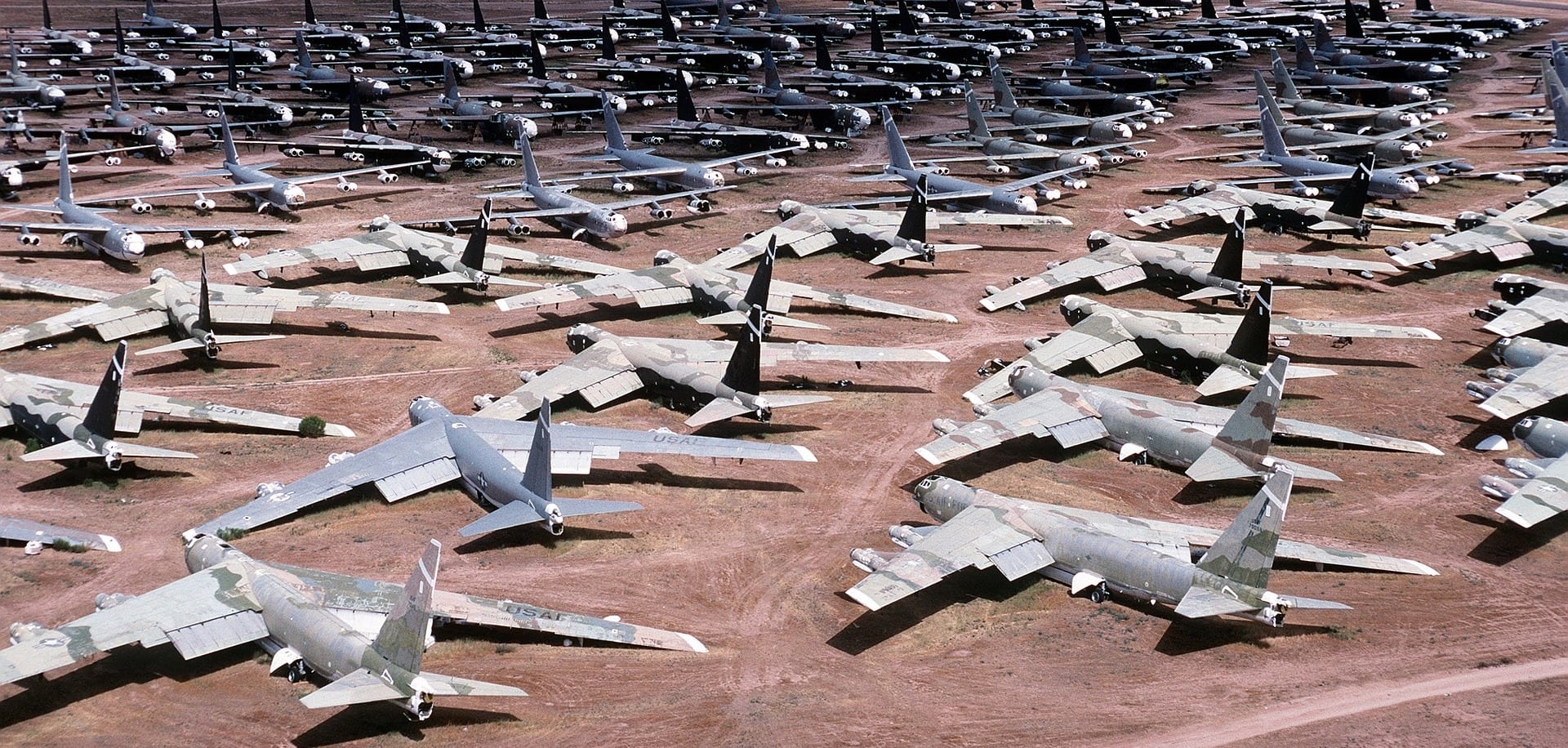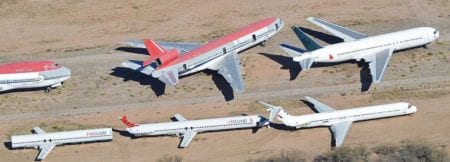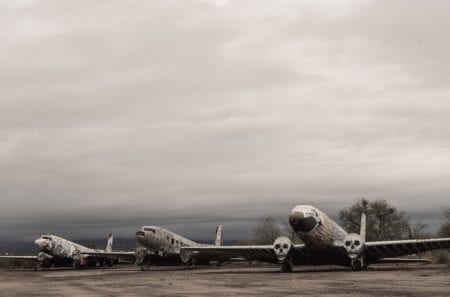Where do old airplanes go when they’re no longer needed? To a “boneyard” in the desert, where they get stored and then stripped for parts — or reborn to fly again.
When your car has coughed up its last mile, it usually ends up in a salvage yard. But what happens to a 747 after it has delivered its last passenger?
In most cases, jets get flown to aircraft “boneyards” around the world, located mostly in deserts where the planes are safe from the damaging effects of humidity. Once an aircraft arrives in the boneyard, a team led by technicians like Tim Zemanovic gets to work.
Zemanovic isn’t only a tech — he’s also the founder and CEO of Jet Yard, an airplane storage, maintenance and recycling firm based at Pinal Airpark in rural Arizona. A former military base located next to Saguaro National Park just outside of Tucson, Ariz., Pinal has a 6,800-foot runway that lets even the largest of aircraft land there.
Aviation analysts Ascend estimate that there are roughly 2,500 airliners at boneyards like Pinal today. And more than 12,000 airliners will end up at these facilities over the next 20 years, according to the Aircraft Fleet Recycling Association.
Sunscreen, Sand and Snakes
Once a plane gets parked at Pinal, Jet Yard technicians get busy sealing up engines, covering windows and putting plugs into sensitive equipment to protect them from whirling sand and dust. If they expect the aircraft to be there a while, a crew mounts a crane to paint over the airline’s tail and fuselage logos. (It’s not considered good branding to let customers see your planes gathering dust in the desert.)
“Some are kept in storage for a short time before they’re sold and they’re back in the air,” Zemanovic says. The process of refreshing a stored plane involves a great deal of cleaning, checking and tuning up of equipment by Jet Yard’s techs.
But that doesn’t happen for most airliners.
“Most that are retired will never fly again. They’re parted out and recycled. It just depends on the type of aircraft and what the market is,” Zemanovic says.
After a jet is sealed up, not much maintenance is needed. But when a call from the owner comes in to begin the recycling process on an aircraft that’s more valuable broken up than in the air, that’s when Jet Yard’s technicians start the two- to three-month process of breaking down a jet. They get their tools ready, as well as gloves, sunscreen and a wary eye.
Unpleasant surprises sometimes await the techs in the desert. Large rattlesnakes have been known to nest near massive jet tires, and scorpions and black widows like to crawl into the dark, tight spaces where the techs have to work.
“You need to be careful out there sometimes because of these ‘squatters,'” Zemanovic says.
Breaking Down the Big Bird
 The Aircraft Fleet Recycling Association estimates that up to 85 percent of an old airliner can be recycled or reused, a figure that’s expected to rise as airplane manufacturers work to make their products less likely to end up in landfills. For techs, the first job is often to tackle the most valuable components of the plane: its engines and landing gear.
The Aircraft Fleet Recycling Association estimates that up to 85 percent of an old airliner can be recycled or reused, a figure that’s expected to rise as airplane manufacturers work to make their products less likely to end up in landfills. For techs, the first job is often to tackle the most valuable components of the plane: its engines and landing gear.
“Because of the obvious wear, parts in these systems are in great demand,” says Zemanovic. “They keep other aircraft flying.”
First, techs carefully drain hazardous materials such as hydraulic fluid, A/Crefrigerant, de-icing fluid and leftover fuel, then they pull the avionics and electrical equipment. Next, they collect seats and emergency gear such as life vests, oxygen masks and life rafts to be sold for reuse. Once the plane looks like an empty hull, the hydraulic excavator comes out, ripping through the aluminum skin like paper and tearing a once majestic bird into recyclable scraps.
Tools of the Trade
Before the techs at Jet Yard ever strip down a plane, they have to undergo strenuous training. They must get airframe and powerplant mechanics licenses, which are issued by the FAA and allow them to make aircraft repairs and maintenance. “A&Ps,” as they’re commonly known, require at least two years of coursework and even more time to become specialized in airplane systems like hydraulics and avionics. (Zemanovic himself got his start in the 1980s as an A&P mechanic.)
A&Ps typically supply their own basic tool sets like any other type of mechanic. Unlike most toolkits, theirs feature a wide selection of 12-point sockets in varying sizes and depths, since some equipment has critical torque requirements that a 12-point socket is better able to reach. They also have aviation ratchets capable of fitting into tight spaces that a typical Craftsman model can’t reach.
Pay for this kind of work averages $50,000 to $80,000 per year depending on experience and, according to Zemanovic, it’s much more pleasant working in the fresh air than in a closed hangar like most A&Ps.
“No two jobs are alike, so it’s never boring,” says Zemanovic. “You’re outdoors, and it can be fun working on these amazing, complex machines.”




Share this: